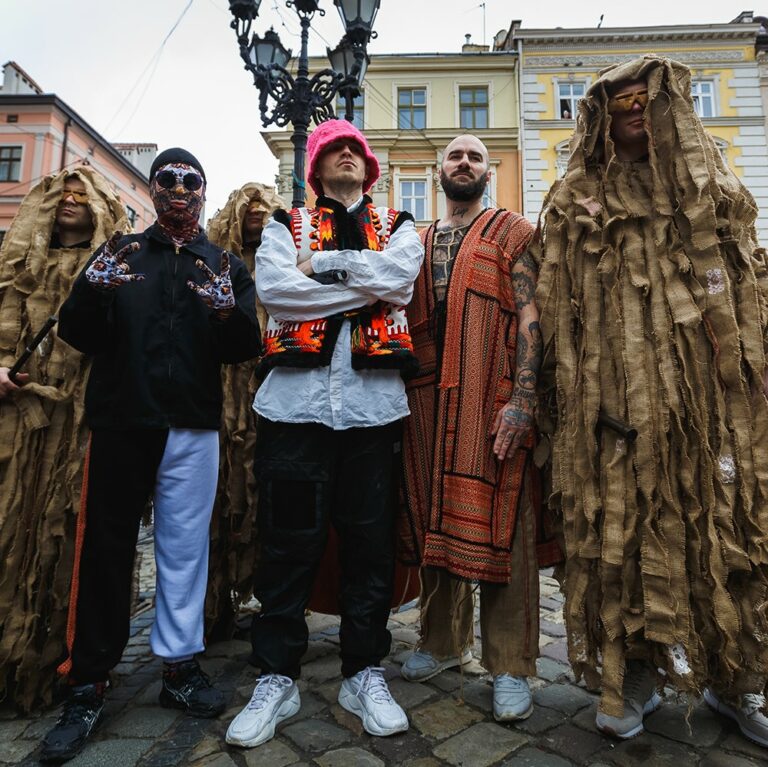
The Eurovision victory of the Ukrainian band Kalush Orchestra drew the attention of hundreds of millions of people. Today, the famed pink panama hat of the band’s leader, Oleh Psiuk, is entering the sales trends from the markets in the city of Kalush to the Amazon platform. And where to buy “that cape” worn by sopilka player Tymofii Muzychuk, or what is the correct name of the instrument? We’ll explain what the band was wearing and from which Ukrainian masters you can order similar items.
The combination of authentic Ukrainian and modern clothing elements made Kalush Orchestra instantly recognizable. This is how millions of spectators from dozens of countries discovered Hutsul cheres, Bukovynian keptar, and Pokuttian serdak. Some of these things are vintage, while others are recreated by modern masters.
Naturally, this piques people’s interest and drives them to seek out similar clothing and accessories. However, ethnologists and collectors advise against wearing authentic items because it damages old clothing (it wears out quickly), resulting in the loss of unique samples of traditional culture.
Instead, the best thing you can do to preserve and promote the traditional Ukrainian costume is to support a craftsman or woman by ordering a modern replica of your favorite authentic item.
We’ll describe in detail what traditional clothes and accessories the Kalush Orchestra members were wearing during their stellar performance, as well as where you can find craftsmen and studios where you can order similar things.
Keptar (or keptur) is a traditional sleeveless jacket, made of sheepskin, worn in the colder off-season in Zakarpattia, Boikivshchyna, Hutsulshchyna, and Bukovyna. Sheep’s fur is left on the inside as insulation during processing, while the processed leather is decorated with charming ornaments: inlays and appliques of metal, beads, leather, threads, as well as embroidery.
Oleh Psiuk’s keptar is richly decorated with beads as per Bukovynian tradition.

Who makes it?
Craftsman Mykhailo Vintoniuk specializes in the restoration and manufacture of traditional Hutsul keptars.
The family brand OKSUMORON also makes keptars based on authentic samples from various parts of the Carpathians, as well as slightly modernized models. Furriery (preparing pelts for sewing clothing) is a hereditary craft for the brand’s craftswoman Siuzanna Slovak and her mother, Kateryna.
You can also order a keptar from Nataliia Kishchuk, an employee of the Kosovo Institute of Applied and Decorative Arts.
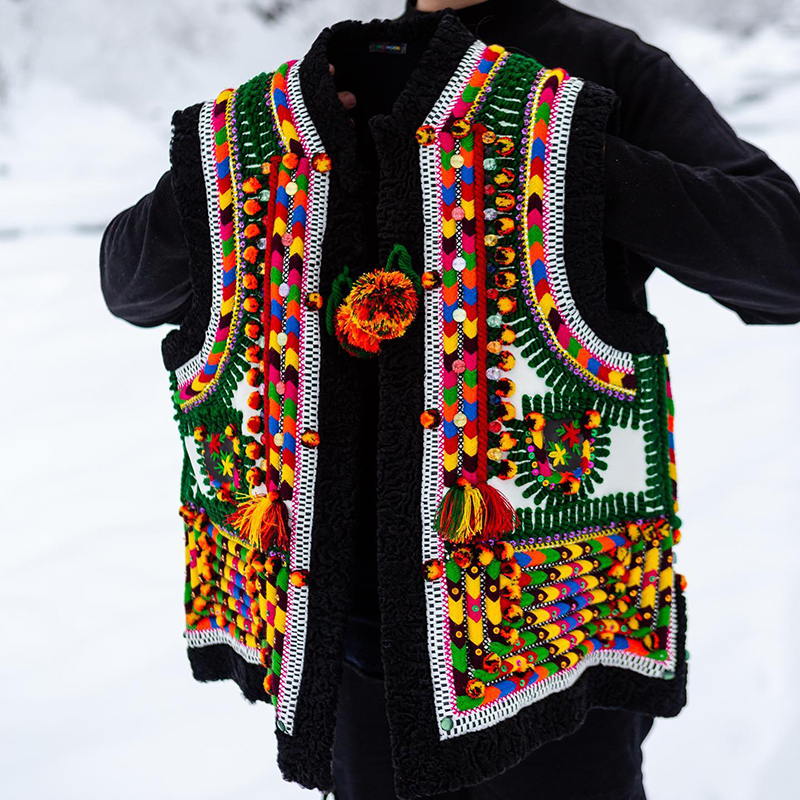
Photo: @oksumoron_brand.
Serdak (also sardak or svytka) is a thick cloth outerwear decorated primarily with colored threads. In the spring, autumn, and the warmer months of winter, both men and women wore it.

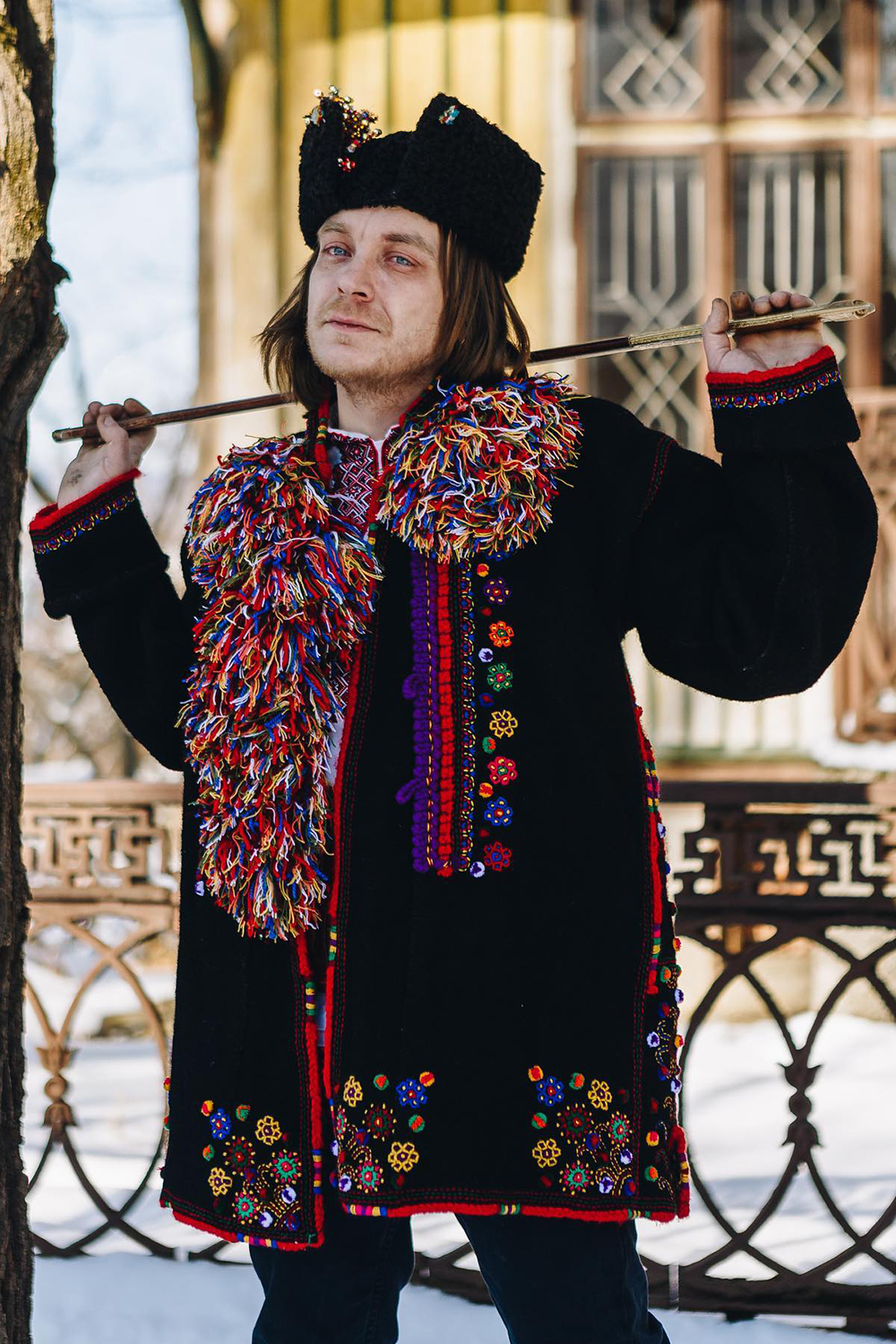
Photo: @oksumoron_brand.
Who makes it?
Ruslan Pavliuk-Prorva’s “Shliakhetnyi Odiah” (“Noble Clothes”) studio recreates traditional Ukrainian clothing from different regions. They can also make a Hutsul serdak, similar to the one worn by Tymofii Muzychuk during the performance.
Oksana Sokol, a craftswoman, can make similar clothes to order.
Also, high-quality authentic serdak can be ordered from the already mentioned OKSUMORON brand.

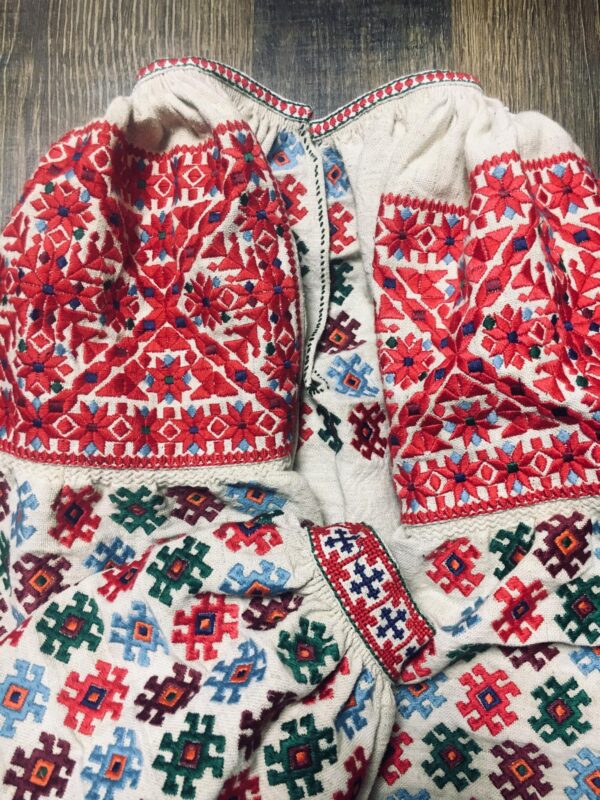
Photo: Bohdan Petrychuk.
Almost every Ukrainian owns an embroidered shirt (vyshyvanka), which has long served as a symbol of national identity. Both Oleh Psiuk and Tymofii Muzychuk are wearing vyshyvankas. The sopilka player wore a festive shirt with a more traditional ornament, an abundant embroidery that covered almost the entire visible part of the chest, and an embroidered collar, while Oleh Psiuk wore a modern vyshyvanka: buttoned and one-colored.
Who makes it?
Today, there are many workshops in Ukraine that make embroidery using only natural threads and fabrics. There are many stylized modern blouses on the market, as well as masters who only use traditional techniques.
Among those who make embroidered shirts are (western regions included): Bohdan Petrychuk, Olha Kapko and her ProstoKoza workshop, Magda Dzvin’s workshop, Olenka Didyk’s creative workshop, Olena Daniva, Yaryna Slipetska, and Anna Rohatynska.
Cheres is a traditional wide men’s belt that was designed to keep the back healthy while working with heavy wood. Later, such belts were adorned with embroidery and inlays and began to be used as an element of festive clothing. Small sacks of money, gunpowder, or tobacco were attached to the cheres, and the belt also had special fasteners for attaching a pistol, bartka (a hatchet), or other weapons.

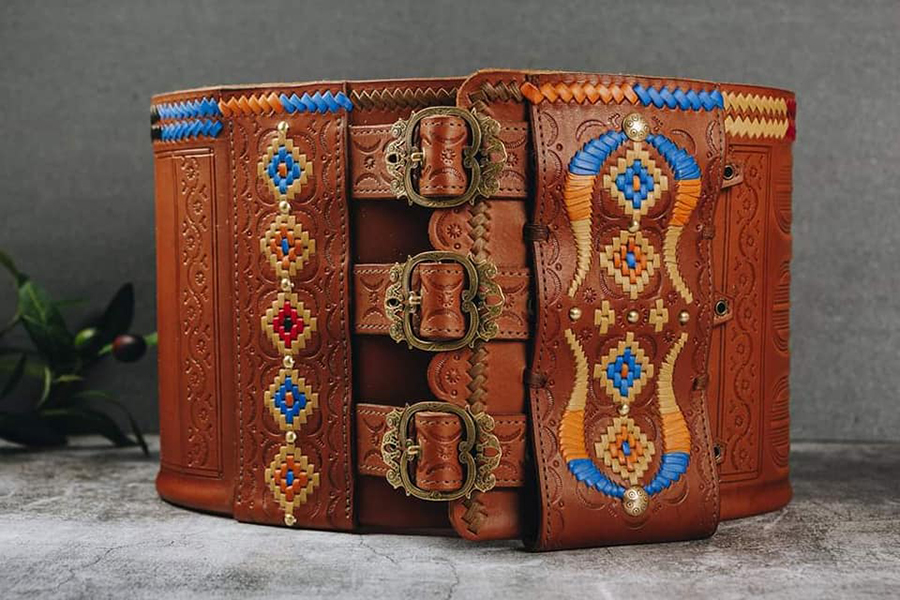
Photo: Yurii Porokh.
Who makes it?
Yurii Porokh is the creator of the exquisite cheres worn by a member of the Kalush Orchestra.
Custom-made chereses are also available from the previously mentioned brand “Shliakhetnyi Odiah” (“Noble Clothes”). Furthermore, one of the Boyko-style chereses is currently for sale in order to raise funds for the Ukrainian Armed Forces.
Handwork.studio sells leather belts-chereses that are simple and suitable for everyday wear. The same studio is available on Etsy, with international shipping options.
Taistra is a woven shoulder bag that was traditionally worn by women of the Hutsul region, Pokuttia, and Bukovyna. Almost every souvenir shop in the Carpathians sells variations of this traditional bag. However, only a few people make them by following authentic technology.


Who makes it?
Bukovynian carpet taistras similar to the one Sasha Tab had can be ordered from craftswoman Iryna Rurak or the masters in the village of Shypyntsi.

There are also many “tourist” options for Hutsul clothing and accessories that can be found, for example, on the website hucul.if.ua. Handmade items can also be found here and they are less expensive than the entirely custom-made ones.
Telynka (tylynka) is a type of flute that shepherds traditionally played while grazing sheep. They made telynkas themselves because it was easier than making sopilkas. Telynka lacks traditional holes along the base, and the difference in notes is obtained by the musician’s breath strength and the virtuosity of the finger pressure on the vent hole.
Who makes it?
Vasyl Nahirnyi, a craftsman from Bila Tserkva, created the telynka for Tymofii Muzychuk. It was made from modern materials using ancient techniques. Hutsul master Mykhailo Tafiichuk creates authentic musical instruments, including telynkas, entirely out of wood.
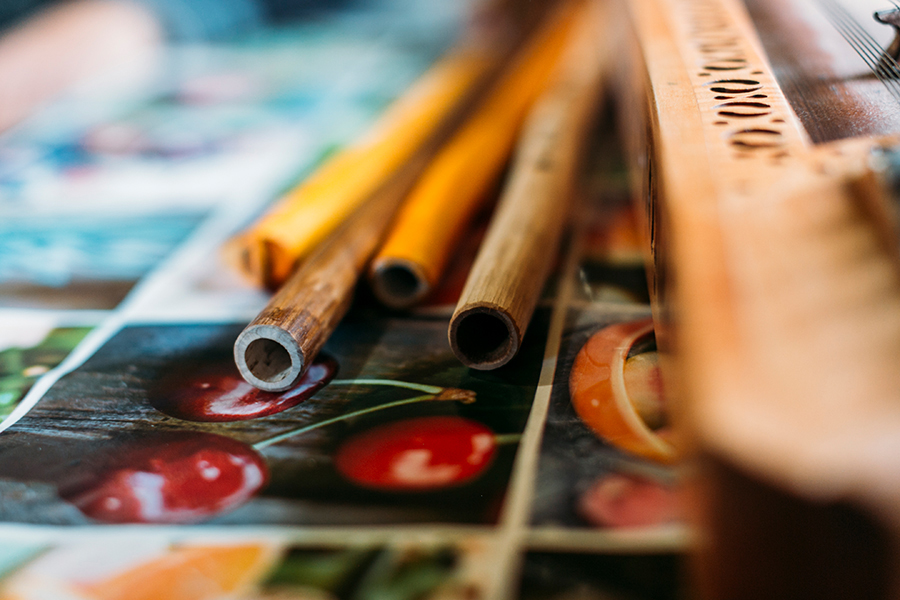
Photo: Alina Kondratenko
Among other masters, it is worth mentioning the Podolian master Volodymyr Vikhrenko and Yaroslav Loshak, a master from the Hutsul region. His brother, Taras Loshak, also makes wind instruments and sells them for donations to the Ukrainian army.
Dmytro Bereziuk offers to make telynkas for fans of the “Stefania” song in exchange for a donation to the Armed Forces of Ukraine.

